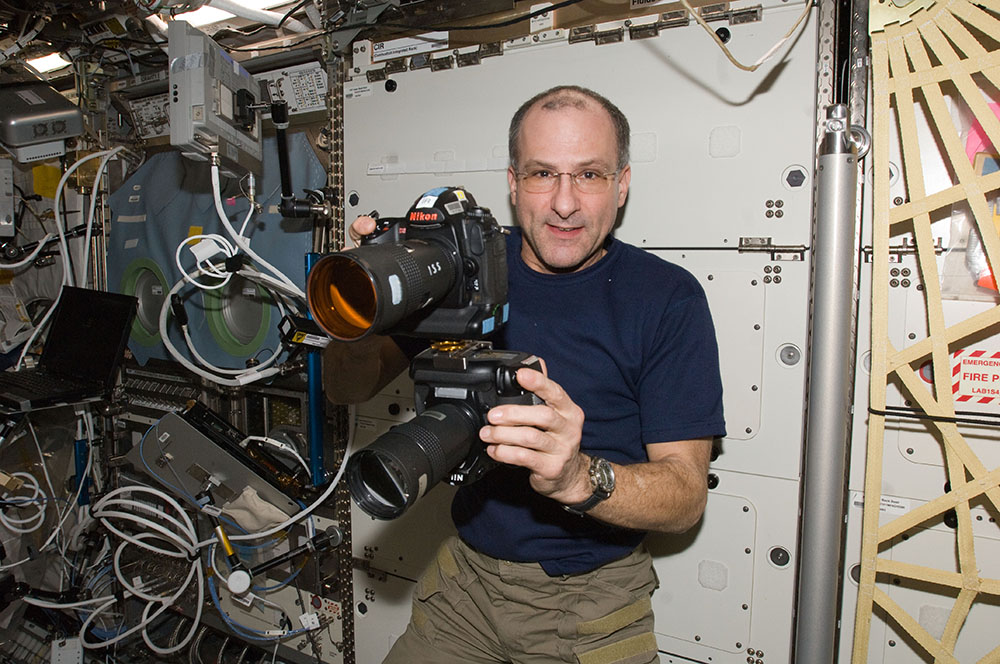Near-Infrared Imagery Collection
A hand-held Nikon D3s camera was modified to allow near-infrared (NIR) photography from the International Space Station. Astronaut Don Pettit first initiated the camera conversion to collect imagery of the red emissions of auroras while on Expedition 30 of the ISS. Other applications include vegetation investigations for the daytime color IR images.

Infrared Origin
The infrared filter was removed from over the camera CMOS array and replaced with a clear filter (no UV filter) allowing infrared wavelengths to be recorded by the camera up to about 1200 nanometers. This camera has a 12 megapixel full-frame sensor with 4256 by 2832 pixels that are spaced 8.45 microns apart. After the CMOS IR filter was replaced with the clear, Nikon updated the firmware in the camera to accommodate the modification. The Nikon D3s places the IR information in different color channels than color IR film. Color IR film was designed to render IR in red, red in green, and yellow in blue and has become what is considered standard when looking at IR imagery. A blue blocking filter effectively removed ambient blue light. In the Nikon D3s, IR falls in the blue color band and yellow-green fall into their normal bands (blue is blocked with a filter). These images look strange because vegetation is rendered in blues and purples. With Photoshop, the color bands can be swapped so that these IR images look like the classic color IR film images. The Near Infrared Imagery webpage shows examples.

